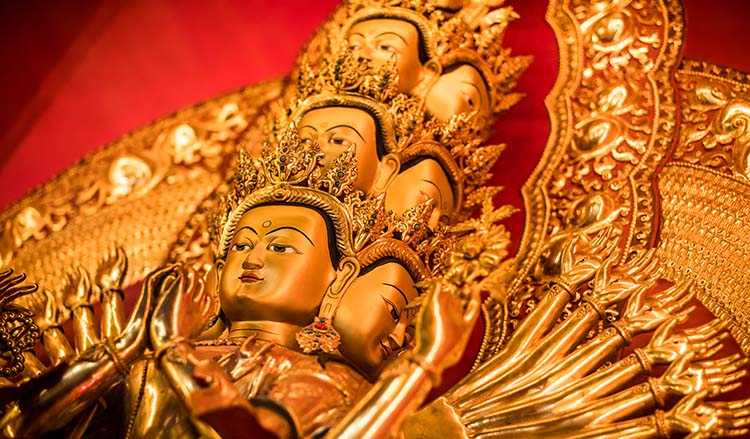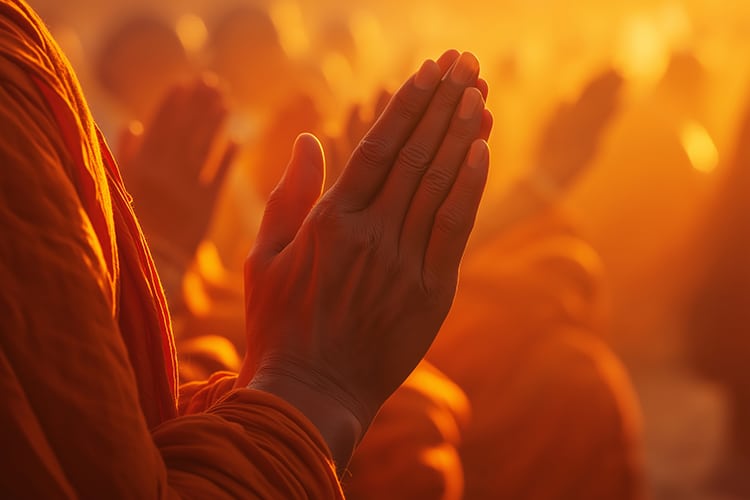What’s My Motivation? Practicing Buddhism
Category: Buddhist Meditation | Buddhist Path

Purifying our Motivation Along the Buddhist Path
Most of us turn toward spirituality because we want to live happier, more meaningful lives. But is that enough to keep us motivated along the path? Mahayana Buddhism describes three types of motivation, or three vehicles, which transport us from where we are right now to where we’d like to be.
What drives our daily actions? In our current, unenlightened state, we are generally motivated by desire and aversion. Karma compels us to act out of habit and ignorance. We grasp toward that which we think will make us happy and push away that which we do not like. Happiness is always just around the corner. Contentment will become available once we manage to conjure just the right set of external circumstances.
According to Mahayana Buddhist philosophy, those of us with even the least mental capacity can glimpse the futility of chasing future joy in this manner. We question whether there might be a better way. Our yearning to be happier in this life motivates us to turn within.
At first, we might dabble in meditation simply as a means of reducing stress or feeling better in everyday life. For some, this inner exploration leads to a more profound shift. We not only want to feel better now, we want to address the cause of future discomfort and dissatisfaction. We may even become motivated to help others do the same.
The Buddha’s teachings speak directly to these three different motivations. We may experience just the first two in this lifetime, we may toggle back and forth between each, or we can turn toward the desire to help others awaken, and never turn back.
The Three Motivations in Mahayana Buddhism
Mahayana Buddhism focuses on developing bodhicitta, a Sanskrit word variously translated as the mind of enlightenment, spirit of awakening, or awakened heart. Bodhicitta is the main practice of the bodhisattva path. Before bodhicitta manifests, our motivation is primarily self-centered. We want happiness and we want it now. As we begin to train the mind with meditation, we may see it’s possible to reach nirvana and enlightenment, and so we want that for ourselves too. Over time, as our capacity increases, we develop a new, selfless kind of motivation, that of bodhicitta.
Motivation for those of the lowest capacity
The first level 1 motivation is historically described as for those with the weakest mental capacity. We might think of this as the untrained mind. We have the capacity to hear the teachings of the four noble truths, and it frightens us into action. In an effort to avoid suffering in this life or rebirth in a lower realm, we are motivated to take refuge and behave ethically.
Motivation for those of intermediate capacity
For the practitioner of level 2 motivation, it is not enough to avoid rebirth in a lower realm. They desire to be liberated from samsara, cyclic existence, completely. These practitioners, described as having an intermediate level capacity, focus not only on reducing harm, but on eliminating the mental afflictions that keep us repeating past mistakes. As such they have developed a more refined understanding of karma and dependent origination.
Motivation for those of highest capacity
This advanced level path necessitates the experiential understanding that none of us are free until we all are. Those who have developed this wisdom are said to be of supreme mental capacity. Their insight into interconnectedness deepens their understanding of karma and gives rise to bodhicitta, the motivation to help others awaken. At this stage, the desire to achieve full Buddhahood has completely selfless origins.
Among the advantages of bodhicitta is that it carries within it an aspect of recognizing that which is already awakened within us. The urge to want to help others, and the realization that to do so we have to help ourselves, is the result of compassion and wisdom coming alive in our hearts. Ultimately, the motivation of bodhicitta and the desire to compassionately dedicate our practice to the benefit of others becomes paramount and informs not only our practice but our entire lives.
As you turn inward to explore and discover inner motivation, understand that these three levels aren’t meant to correspond with good, better, best. For each of us, there is an entry point onto the path that meets us where we are. The more we develop insight and wisdom, the stronger and more unwaveringly supportive our motivation becomes, and our practice becomes imbued with joyful perseverance.
The three motivations are therefore not contradictory, but lead to the same goal. Our motivation and the meaning we give to our journey changes and grows as we do.








